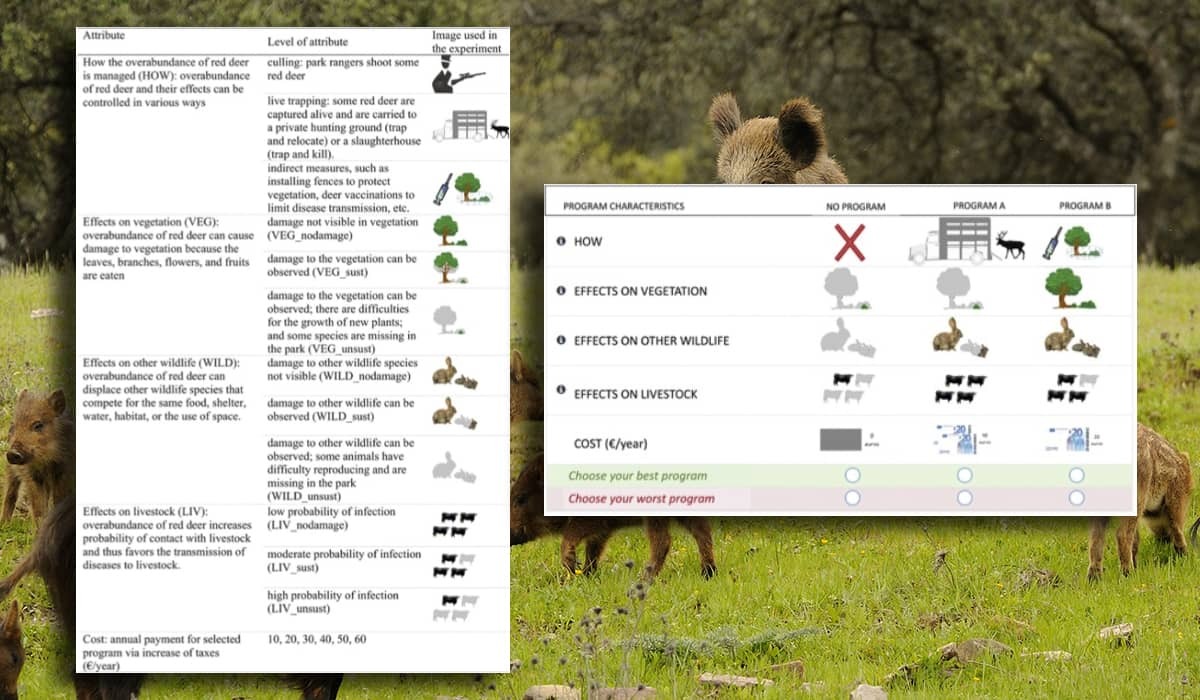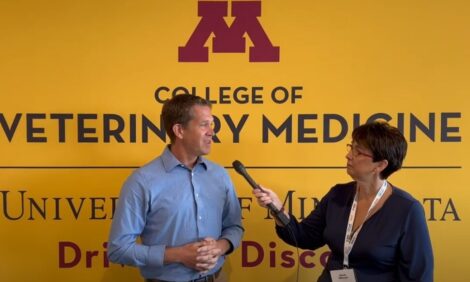



How to control the overabundance of specific wildlife species in national parks?
Survey: 95% agree on need to control damage caused by hoofed mammals in national parks - the question is how?95% of those surveyed agree on the need to control the damage caused by the overabundance of certain species of fauna, such as wild ungulates, in national parks. However, there is no consensus on the most appropriate methods of carrying out this control.
The uncontrolled growth of some animal populations, such as deer (Cervus elaphus) and wild boar (Sus scrofa), can lead to negative environmental and socio-economic repercussions. In many habitats, especially those whose evolution has been associated with traditional human activities (such as extensive agriculture and livestock, or hunting), the active management of these populations may be necessary, since non-intervention could lead to a cascade of less favorable ecological effects for the conservation of the whole ecosystem.
In the case of national parks, this issue has generated a particularly intense debate between positions in favor of and against human intervention in the control or management of certain natural processes.
According to a study recently carried out by the University Institute for Research in Sustainable Forest Management (iuFOR) – a joint center of the University of Valladolid and the National Institute for Agricultural and Food Research and Technology (INIA) – the Institute for Advanced Social Studies (IESA -CSIC), the Instituto de Investigación en Recursos Cinegéticos (IREC – CSIC, UCLM, JCCM) and the Complutense University of Madrid, 95% of those surveyed would agree on the need to control the damage derived from the overabundance of wild ungulates (hoofed mammals) in protected spaces, such as national parks of an agroforestry nature. However, There seems to be no consensus on the most appropriate method to carry out this check.
This work has taken the national parks of Monfragüe (Extremadura) and Cabañeros (Castilla-La Mancha) as case studies, since both present a worrying problem of overpopulation of wild ungulates that could contribute to their environmental degradation.
"These protected spaces have in common a landscape generated by the traditional action of the human being, so that human activities have been part of the balance of their ecosystems, giving rise to pasture areas,” explains María Martínez Jáuregui, an iuFOR researcher.
For this reason, this research questions whether, taking into account that they are natural spaces created or modified by human action, the size of the populations of some animals should be controlled or not, which, like wild ungulates, may end up contributing to their degradation.
"Unlike the large North American or African parks, European national parks are relatively small, so they are influenced by what happens outside them. In this way, non-intervention could lead to the deterioration and loss of the natural and ecological values for which the territory was declared a national park,” clarify the researchers.
The data collection was based on conducting online surveys in which a choice experiment was included, so that the respondents (a total of 190 Spanish people) could express their preferences on population control measures related to the intensity of the negative effects of the overabundance of wild ungulates in these national parks. Such negative impacts included effects on vegetation, on other wild wildlife species, and disease transmission to livestock.
To intervene or not to intervene? That is the question.
The results of this research, published in the scientific journal Conservation Biology, reveal social concern about the deterioration of the Monfragüe and Cabañeros National Parks, in which the excess of wild ungulates could lead to the disappearance of other species of fauna and flora. Thus, while 95% of those surveyed stated that they agreed with the need to intervene to lessen or mitigate the damage derived from the overabundance of wild ungulates, only 2% said they would prefer non-intervention even if it entailed a greater risk of environmental degradation. These results show the existence of a general positive perception regarding the implementation of programs to manage the overabundance of wild ungulates in national parks.
Intervene... But how and when?
The greatest discrepancy among those who were in favor of the intervention arose at the time of determine which are the most suitable tools to alleviate or eliminate the damage derived from the overabundance of wild ungulates.
In this case, it is observed that, in general, social welfare is more influenced by the tools to control population growth than by the environmental impacts of overabundance. So, the majority of respondents showed a preference for indirect interventions to avoid harm, or by an indirect intervention on ungulate populations (such as the capture of live deer for their transfer to slaughterhouses or hunting grounds). Instead, hunting as a management tool in national parks to control the overabundance of wild ungulates was the least preferred alternative by respondents.
In any case, a considerable percentage of those surveyed did not reject the use of lethal control of overabundance when the environmental and socioeconomic impacts are severe. So, lethal and more invasive management options become more acceptable if the damage caused is unsustainable. In addition, the degree of acceptance of the intervention depended on the type of damage (it was considered more acceptable to intervene if the damage was severe and if the damage was on livestock rather than on vegetation).

So, for or against hunting?
An extra question in the surveys proposed that the control be carried out by hunters supervised by environmental agents as an option to finance these interventions. In this case, 66% of those surveyed were favorable to this alternative. In this case, the hunters, when carrying out a recreational activity, would pay to practice the hunting activity, so the cost (via taxes) of controlling the overabundance of ungulates would be reduced.
However, 19% of those surveyed showed an evident rejection of this option, despite the economic implications. Therefore, although a large part of society would be in favor of controlled and supervised recreational hunting as a tool to control the overabundance of wild ungulates, there is undoubtedly a social conflict.
Taken together, the results of this study show that Society is committed to population control in national parks in the face of an overabundance of wild ungulates when this poses severe damage to the environment. However, there are discrepancies regarding the methods. Therefore, this work has not made it possible to identify an obvious and socially acceptable solution regarding the ideal tools to carry out control tasks.
The scientific publication of this research is available at: Martínez-Jauregui, M., Delibes-Mateos, M., Arroyo, B., Soliño, M. 2021. Addressing social attitudes towards lethal control of wildlife in national parks. Conservation Biology 34, 868-878.






